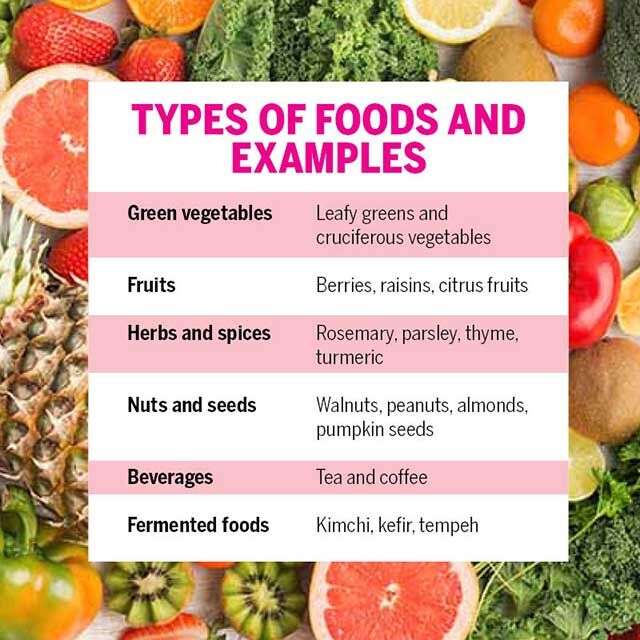
Many state and local governments have developed or are planning programs that prevent obesity. These efforts can promote healthy living and lower the body's fat. Local governments can coordinate these efforts by focusing their attention on residents' needs. A community fitness center is one example of a local government-led program to prevent obesity. This is a good way to get children moving, and to reduce calories. A fitness center is a place that encourages physical activity, which can help keep people in good health.
Numerous states have taken actions to combat obesity. A government could implement a sugar-reduction target for consumers that is meant to improve people's overall health. A portion reduction plan, in the same way, is another good way to achieve this goal. This program can be promoted to mothers with young children and pregnant women. This program is beneficial for everyone, even the elderly. However, not everyone is aware of the benefits these strategies have in their own communities.

While the federal government has a long-standing commitment to physical fitness and nutrition, obesity prevention has received little attention. Since obesity is the number one health indicator for the United States, programs should be targeted to help prevent it. The President's Council on Physical Fitness and Sports is developing a national initiative, Fit 'n Active Kids, and the Partnership for a Walkable America. America on the Move has been developed by the Partnership for Healthy Eating and Active Living. The program aims to prevent adult weight loss through increased physical activity and decreased caloric intake.
Another option is to use CDC grants to finance obesity prevention efforts. These grants support the implementation of programs for people with disabilities. The CDC grants program focuses specifically on chronic disease prevention, and building local capacity. It can also play a key role in the development of community demonstrations. These grants were awarded to 20 states in FY 2003. It is possible that additional states will benefit from expanding the total grant funds to the state level.
There are many programs in public health to reduce obesity. The CDC also funds states, universities, and communities to promote healthy eating and physical activity. Its website contains information on grantee programs, funding sources, and more. It is important that you remember that not all causes of obesity are addressed by public-health programs. Some programs are not able to treat all forms of obesity. They can reduce the risk of developing the disease from the root and improve the overall health of the population.

New Jersey's Health Department is intensifying its fight against the bulge. It created the Office of Nutrition and Fitness, which coordinates programs to prevent obesity. Children and adults are considered the most important state in the country by the state. It is crucial that the government invests heavily in nutrition education, as there are so many overweight and obese children. It is vital that the federal government supports its efforts to improve the health of its citizens.
FAQ
What is the best food for me?
There are many factors that influence the best diet, including your gender, age, weight, health condition, lifestyle, and personal preferences. Consider how much energy and low-calorie foods you consume, as well as whether or not you are a fan of fruits and vegetables.
Intermittent fasting may be a good choice if you want to lose weight. Intermittent Fasting means that you eat only specific meals throughout your day and not three large meals. This may be a better option than traditional diets with daily calorie counts.
Some studies suggest that intermittent fasting may improve insulin sensitivity and reduce inflammation, which can lead to improved blood sugar levels and reduced risk of diabetes. Other research suggests that intermittent fasting may promote fat loss and improve overall body composition.
How often should i exercise?
For a healthy lifestyle, exercise is vital. There is no time limit on how much you should exercise. Finding something you enjoy is key. Stick with it.
Three times a week, you should be aiming to complete 20-30 mins of moderate intensity activity. Moderate intensity will mean that you'll continue to be exerting yourself afterward. This type workout burns about 300 calories.
For those who prefer to walk, you can go for 10-minute walks four times a week. Walking is easy on the joints and has low impact.
If you'd rather run, try jogging for 15 minutes three times a week. Running can help you burn calories and to tone your muscles.
You can start slow if you're new to exercise. Start with just 5 minutes of cardio a few times a week. Gradually increase the time you do cardio until your goal is reached.
Is cold a sign of a weak immune response?
Cold weather can cause a decline in your immune system. Your body produces fewer white blood cell which fight infection. You will feel less pain if you are cold.
How do I get enough vitamins?
Your diet can provide most of your daily requirements. Supplements can be helpful if you are lacking in any one vitamin. Multivitamin supplements can be taken that contain all the vitamins you need. You can also buy individual vitamins in your local drugstore.
Talk to your doctor to find out which foods are rich in vitamins. Dark green leafy vegetables like spinach, broccoli and kale, as well as turnip greens and mustard greens such as turnip and mustard greens and bok choy, are rich in vitamins K & E.
Ask your doctor to help you determine the right amount of vitamin. Based on your medical history and your current health, your doctor can recommend the correct dosage.
What are 10 healthy habits?
-
Eat breakfast every day.
-
Don't skip meals.
-
Be balanced.
-
Get lots of water.
-
Take good care of your body.
-
Get enough sleep.
-
Stay away from junk foods.
-
Do some exercise every day.
-
Have fun
-
Find new friends
What lifestyle is most healthy?
The healthiest lifestyle to live is one where you eat healthy food, exercise regularly, sleep well, and avoid stress. These guidelines will help you live a long, healthy life.
Small changes to your diet or exercise routine can help you start losing weight. For example, if you want to lose weight, try walking for 30 minutes every day. For more activity, you can try swimming or dancing. An online fitness program such as Strava or Fitbit that tracks your activity could be a good option.
Supplements and herbs can improve immunity
It is possible to boost immune function by using herbs and natural remedies. Some common examples include garlic, ginger, oregano oil, echinacea, ginkgo biloba, and vitamin C.
These herbs should not be considered as a substitute for conventional medical treatment. These herbal remedies can cause nausea, vomiting, stomach cramps or dizziness.
Statistics
- nutrients.[17]X Research sourceWhole grains to try include: 100% whole wheat pasta and bread, brown rice, whole grain oats, farro, millet, quinoa, and barley. (wikihow.com)
- According to the 2020 Dietary Guidelines for Americans, a balanced diet high in fruits and vegetables, lean protein, low-fat dairy and whole grains is needed for optimal energy. (mayoclinichealthsystem.org)
- According to the Physical Activity Guidelines for Americans, we should strive for at least 150 minutes of moderate intensity activity each week (54Trusted Source Smoking, harmful use of drugs, and alcohol abuse can all seriously negatively affect your health. (healthline.com)
- Extra virgin olive oil may benefit heart health, as people who consume it have a lower risk for dying from heart attacks and strokes according to some evidence (57Trusted Source (healthline.com)
External Links
How To
What does the "vitamins” word mean?
Vitamins are organic compounds found naturally in food. Vitamins aid us in absorbing nutrients from the food we eat. Vitamins cannot be produced by the body. They must be acquired from food.
There are two types of vitamins: water soluble and fat soluble. Water-soluble vitamins dissolve quickly in water. These include vitamin C (thiamine), Vitamin B1 (riboflavin), Vitamin B2 (riboflavin), Vitamin B3 (niacin), Vitamin B6 (pyridoxine), Vitamin C, B1 (thiamine), Vitamin B2 (riboflavin), Vitamin B3 (niacin), and Vitamin B6 (pyridoxine). Fat-soluble vitamins are stored in the liver, fatty tissue and kidneys. You can find vitamin D, E K, A, beta carotene, and other fat-soluble vitamins.
Vitamins are classified based on their biological activity. There are eight main groups of vitamins.
-
A - vital for healthy growth.
-
C - essential for nerve function and energy generation.
-
D - Essential for healthy teeth and bones.
-
E - needed for good vision and reproduction.
-
K – Required for healthy nerves & muscles.
-
P - Essential for strong bones and teeth.
-
Q - Aids digestion and iron absorption
-
R – Required for the formation of red blood vessels.
The recommended daily intake (RDA), of vitamins varies with age, gender and physical condition. RDA values are set by the U.S. Food and Drug Administration (FDA).
For adults 19 years and over, the RDA of vitamin A is 400mg per day. For fetal development, pregnant women need 600 mg per day. Children ages 1-8 require 900 micrograms per day. Children under 1 year old require 700 micrograms daily, while infants over one year old need 500 micrograms every day. This decreases between 9 and 12 months.
Children aged 1-18 years need 800 micrograms daily, while children overweight require 1000 micrograms per days. Children who are severely obese or underweight will need 1200 micrograms each day.
2200 mg of vitamin A per day is required for children aged 4-8 who have been diagnosed by anemia.
2000 micrograms are required daily for good health in adults over 50. Breastfeeding or pregnant women require 3000 micrograms per daily due to higher nutrient demands.
Adults over 70 years of age need 1500 micrograms per day since they lose about 10% of their muscle mass each decade.
Women who are pregnant and lactating need more nutrients than the RDA. Pregnant women need 4000 micrograms per dayduring pregnancy and 2500 micrograms per day after delivery. Breastfeeding mothers need 5000 mg per day when breastmilk is being produced.